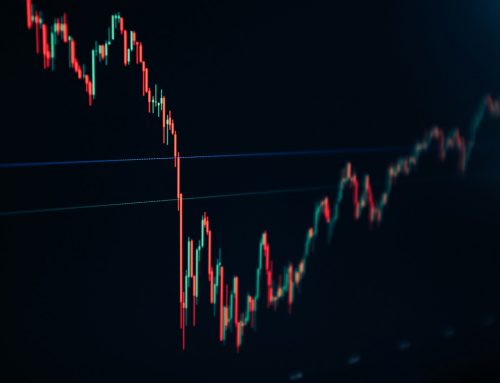How to spot what companies are hiding in their accounts
In the latest episode of Fantastic Female Fridays, we have the founder and CEO of Accountant Online, Larissa Feeney in our show, to share her insightful views based on her professional experience in the accounting industry.
What are the key principles that underpin a set of accounts?
First of all, every set of accounts has to show a true and fair view of what had happened in the business in a given period (usually one year). All the following principles serve this central requirement.
The first principle is “revenue recognition”, which is to make sure that the revenue has been recognized correctly. Depending on the part of the world you are in, you may recognize it on an accrual basis or a receipts basis. That is the main principle that all revenue has to be shown.
There is the “matching principle”, which means that you have to match your cost to your revenue. In the full disclosure principle, in specific terms, everything material has to be disclosed. If it is immaterial then there is no need to worry too much about it.
The going concern principle refers to whenever we prepare a set of accounts, we prepare it on the basis that the business will continue as a going concern (i.e. continue to operate) in the future.
The principle of conservatism points out that if we have any doubt over a cost or a sale, we will always be conservative, prudent, and pessimistic, as a result of which accountants will understate income and overstate cost, as appropriate.
Who will read the accounts?
We prepare accounts for stakeholders – anybody that has an interest in our business. Anybody (might be the business competitors, investors, etc.) can seek out a set of accounts from a business. From a company’s perspective, you have to make sure that you employ the right people to produce the accounts correctly so they are professionally regulated and insured. Statutory accounts comply with certain regulations and formats, but do not give disclosure of everything. In discussions with potential funders, companies produce management accounts other than statutory accounts, to provide much more details.
What do the accounts of a business not tell us?
You are not told how the company is performing or will perform in the future. You cannot see the budgets, forecasts, cash flows, or detailed day-to-day operational information. A turnover rate or churn for employees will not be displayed in accounts, either. You have no idea of culture and no idea of what is going on. Crucially for investors, the accounts will not tell you the market value of the company. You have the basic cost information, but you cannot see what the business would attract to the market. And accounts will not tell you any non-financial factors (KPI, targets, goals, debits, credits, etc.). You cannot see the degree of vulnerability of the business, the reliance on any customers, any markets, or any geographical areas. It will not tell you why the profitability is low. You have to proactively search for extra information when needed.
What do you consider to be particularly profitable business models?
Firstly, “high margin low volume” or “high volume low margin” business models are choices for profitable business models. Secondly, businesses on a subscription or retention base are good to be seen, which recur revenue and don’t have as much reliance on people constantly seeking new sales. Thirdly, the more automation, the better, as this reduces cost and increases efficiency. And fourthly, the business needs to be built without relying on the founders vitally.
How has accounting and finance changed?
Traditional accountants would have provided those statutory financial statements several months after the year-end. But businesses are now demanding monthly accounts and real-time information. Traditionally, by contacting a professional service firm whether they are accountants or solicitors, you might have waited for a response for 24 or 48 hours, which is no longer acceptable. Now businesses are demanding better service, quicker response, and more up-to-date information, hence pushing accounting and finance to tailor themselves in a more efficient way to satisfy those latest demands.
What has it been like to operate in a high-growth environment where scaling a service-based business in an environment, where the tradition of accounting has not changed but the expectations of the customers and the technology have changed?
Larissa feels it is hard, expensive, and challenging yet great fun to run a business in such a complicated environment. The most challenging parts are to balance growth with delivery and build a business from nothing because you have to build processes for every single thing. Your jobs change so fast, so you have to learn how to handle new jobs all the time.
As the business grows, you have to grow.
Blockchain is now becoming increasingly mainstream (and hence the reason we featured it in a recent ESG & Tech show episode). Do you see major changes coming towards the professions due to blockchain?
There is the potential for change with blockchain, and there also comes huge opportunities for the industry. What blockchain does is allow us to completely reform the way that we prepare a set of accounts. From a practical perspective, an accountant does the debit, credit, and check. Blockchain comes in to do the check, which could save a big amount of time to free accountants from non-value-added tasks and hence focus us on more important tasks.
How can you get forward-looking information with VectorVest?
With the stock viewer of VectorVest, you can try to approach the information that is hidden in accounts. Some pivotal indicators can be very helpful.
RV (relative value) is an indicator of long-term price appreciation potential. It is far superior to a simple comparison of Price and Value because it is computed from an analysis of projected price appreciation three years out. In this case, we overcome one of the challenges of accounts. They are forward-looking, but this proprietary indicator looks at how favorable the stock’s prospects are looking forward.
RS (relative safety) is an indicator of risk, computed from an analysis of the consistency and predictability of a company’s financial performance, debt to equity ratio, sales volume, business longevity, price volatility, and other factors. We picked up on this as a viewer asked a question about how you can spot an overreliance on short-term debt in a company. Since RS focuses on consistency and predictability including the debt to equity ratio, this indicator can quickly find the companies less vulnerable.
EPS stands for leading 12 months Earnings Per Share, which is determined from a combination of recent earnings performance and traditional fiscal and/or calendar year earnings forecasts. This is one of the most discussed numbers across the entire history of the stock market! How much does a company earn, per share? After its revenue is recognized and its costs subtracted, how much is left to be given to shareholders in the form of dividends or else reinvested back into the business?
GRT (Earning Growth) reflects a company’s one to the three-year forecasted earnings growth rate in percent per year. This is the one key area that Larissa pointed out as absent from the accounts. She said that you can’t see budgets, goals, KPIs, etc. However, using our indicator, you can get visibility into the company’s projected bottom line plans.
With those vital and useful indicators, you can make much more informed decisions about investing in companies listed on the stock market.
Check out the full episode with Larissa Feeney for a more in-depth analysis of how to spot what accounts are hiding!







Leave A Comment